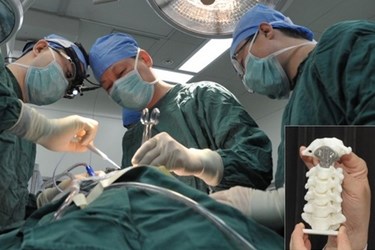World's First 3D Printed Vertebrae Implanted
By Chuck Seegert, Ph.D.

Commercially available spine implants generally work well, but for special situations like those involving smaller pediatric patients, they can be inadequate. To address the issue, researchers at Peking University Third Hospital in China turned to 3D printing.
When doctors in China recently evaluated a 12 year old boy named Minghao, they discovered a malignant tumor on his spinal cord, according to CBS news. In order to treat this tumor, part of Minghao’s cervical spine needed to be removed and reconstructed. To fill the void left by the removed bone, researchers used a custom implant fabricated by 3D printing.
The vertebral implant was composed of titanium, a common material in spinal orthopedics. This implant, however, was created using a titanium powder that was built layer by layer, according to a recent article in Forbes. Using imaging data collected during diagnosis, a nearly exact replica of the patient’s vertebrae was generated using 3D printing.
The implant was placed between the first and third cervical vertebrae and included no fixation devices like screws or glue, according to the CBS report. Instead, the implant design included pores, or small holes that would allow integration of the bone into the implant, thus securing it. Minghao will have to wear special head gear to prevent too much motion during healing, but eventually the bone itself should hold the implant in place.
“Although the probability is very low, it is possible that under long-term pressure from inside the body, traditional implants might plug into bones gradually, or become detached from bones,” said Liu Zhongjun, director of the orthopedics department at Peking University, in the Forbes article. “But there will be no such problems for 3-D printed implants.”
3D printing is gaining an incredible amount of attention as a fabrication method for implantable devices. Very recently, the FDA announced the clearance of a 3D printed facial implant system. In addition, other advances continue as the 3D printing technology has also been studied for the possibility of printing implants that also release drugs, or bioactive agents.
Image Credit: Peking University Third Hospital
